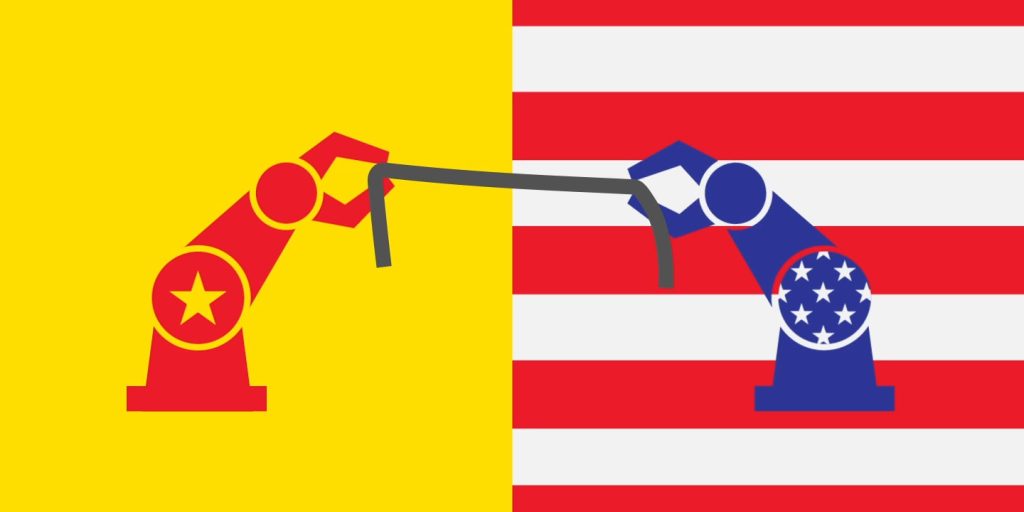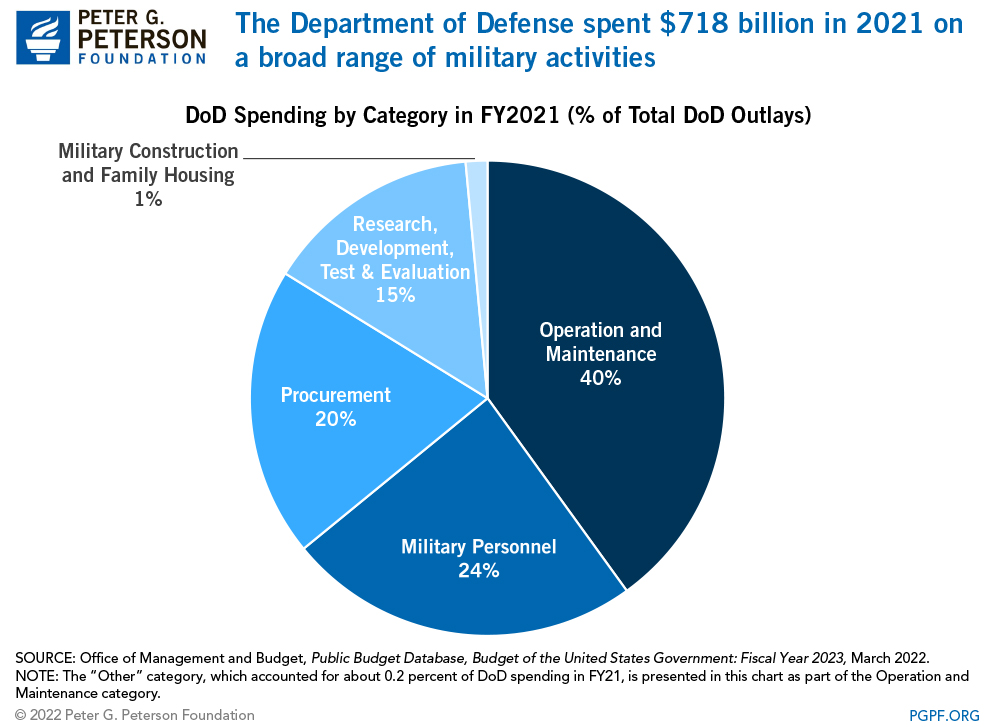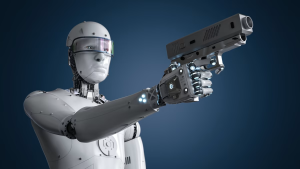
Artificial Intelligence is rapidly transforming our world and it is poised to play a major role in the future of warfare. Superpowers acknowledge the potential and dangers of this technology and have invested billions in becoming the key player in this area. This competition between nations led many people to argue that an AI arms race is unavoidable and that it is already going on between the US and China. Despite concerns about the potential dangers and ethical issues associated with this AI arms race between superpowers, it could also have beneficial effects on society. What if the benefits outweigh the potential dangers?
The last arms race was the “Cold War”, if solely focused on the arms race part and not on the difference in political ideology, this period resulted in increased tension and the proliferation of weapons of mass destruction. However, it also led to economic growth and scientific advancements. Scientific advancements in an arms race are inescapable, in the cold war this got us to the moon, a seemingly useless innovation for the general public. However, the space race sparked a domino effect of innovations like GPS, the internet, reliable transistors, and chips, without technology like this society today as we know it would not exist.
An AI arms race between superpowers has the potential to drive significant scientific advancements yet again. As always seen in times of increasing tensions between countries competing on the technological military level, the need to innovate faster than a competing nation will throw research and development into overdrive. Governments will use more resources like extra funding and encourage talented individuals to drive innovation. Some might argue that this increase in AI-related innovation is only on the military level, but as we have seen in the arms race of the Cold War a spillover with groundbreaking innovations to the general public is unavoidable.
This higher government spending together with new groundbreaking technologies can boost the economy, creating new jobs and increase overall welfare. Of course, wars can be bad for the economy because of fewer trade or trade restrictions, the loss of meaningful infrastructure and reduce in the human population. But does an arms race actually mean that there is a war going on or that a war will happen? An arms race is solely based on competition between two or more countries that strive to have superior armed forces. In the case of an AI arms race the main starting point is to have superior (military) AI technology over other countries, but the disadvantages of a real war are not present.

Then there is also the argument that this arms race where the power of AI is utilized as much as possible for military purposes could give rise to weapons of mass destruction. This could happen by means of killer robots, this point of view is still a bit too sci-fi for the near future. But even if it would happen, we already have a weapon of mass destruction with the atomic bomb, would it make any difference if it would now be based on AI? A far more realistic view is that of the use AI to destabilize the economy or political system within a country during an arms race. However, the social security of countries will increase in responding to this threat by creating new technologies to avoid this. The only real threat will occur when one superpower greatly surpasses another, shifting the power dynamics to one distinct leading superpower. This is very unlikely since most superpowers progress in the same way, of course, one might progress further than another but history tells us that this only happens marginally. We have now discussed the potential dangers of an AI arms race and their counterarguments, but what about the benefits of military AI innovation?
Military AI is already improving society
When asked about how military technology has changed society most people mention GPS, drones, or the internet, but do you also think of ambulances, digital cameras, weather radars, canned food, and epi-pens? In fact, one could argue that recent military innovation has become increasingly beneficial. Unlike gunpowder and spears, the internet and weather radars have unquestionably saved more lives than they have taken. This trend seems to continue with the military innovations of AI.

While the popular press envisions terminator-like killer robots, AI in the military has seen the most potential in cybersecurity, logistics, and even healthcare.
For cybersecurity, smart threat detection and access-control AI agents protect key military systems from cyber threats. Many fear what the future of cybersecurity will be like if AI can start writing malicious code and smart attacks, well the military already has solutions against exactly this concern.
For logistics, AI systems are being used to optimize the transport of military supplies and personnel, keep track of demand and supply, and even automate the transport and delivery of equipment. In our globalized capitalistic market, optimal logistics are often a bottleneck for companies, we could increase the efficiency of the transport of goods to reduce waste in natural resources and fuel consumption.
Finally, for healthcare, Robotic Ground Platforms are used in combination with AI to deliver remote surgeries in conflict areas and to support the diagnosis of patients by taking into account their medical history. Between 2% and 5% of surgeries lead to infection [healthline], this can lead trivial surgeries to become lethal and complicates more invasive procedures. A remote-controlled robot, using AI improvements to facilitate use and reduce error, could remove this entirely by enabling perfectly antiseptic environments. Other benefits include the ability for a surgeon to perform surgeries immediately from anywhere, imagine if instead of just a few surgeons in residence, you could get access to hundreds of affiliated surgeons from all over the world. For diagnosis support, a great example is IBM’s Electronic Medical Record Analyzer (EMRA) which has been developed to process patient medical records; identify and rank their health issues using machine learning techniques, allowing for optimizing the use of medical resources.
There is an AI arms race going on, and it is causing innovation.
The United States Military is not the only military working on creating AI systems capable of performing on a battlefield. The biggest competitor in AI military research is China, whose military has worked on Autonomous Aerial Systems, Autonomous Command Decisionmaking Systems, and Surveillance Systems. A great example of how two competing nations foster innovation is in the field of drones. The US started the trend of drones in war, the first deployment of modern drones happened during the Vietnam war in the 60s and reached mainstream adoption in the 90s with the Predator drones used in the Middle East. While the US started the trend of Unmanned Aerial Vehicles (UAVs) in war, China has chosen to challenge this leadership by developing its own UAVs. This has led China to invest heavily in drone hardware, including batteries, generators, data links, and engines. They have also created software that enables taking off, landing, and planning flight paths based on terrain. All of these innovations will benefit drones and autonomous vehicles outside of the military, just like jet engines became crucial to aviation. Similarly, the United States has been using smart planning systems to assist in logistics, and China is also developing its own decision-making and logistics systems. It is hard to tell what innovations these systems have achieved but advanced and reliable planning systems are also extremely useful for commercial supply lines and emergency situations.

AI Innovation Needs the military
While the previous arguments show that military research undoubtedly promotes socially-beneficial AI innovation many might pose the (very valid) argument that AI innovation is already happening, independent of the military. The private sector has so far taken the lead in the creation and popularization of AI, so why not wait until the private sector develops the innovations for purely social purposes instead of military purposes? One key difference is what drives the innovation, the private sector (for better or for worse) is largely driven by profit, which has shifted innovation from physical tools to data mining, process optimization, and user analysis. This shows in the very few companies and relatively low investment in AI-powered robotics. On the contrary, military innovation is often driven by the needs of the battlefield, which are often physical and involve dealing with parties that are actively trying to sabotage operations. Innovations for a drone designed to understand and navigate a complex combat environment can be used for a drone that understands and navigates complex urban environments, and any use of AI for defense or medical assistance can be translated to help save lives in day-to-day life. The US Navy made an autonomous aircraft capable of landing on an aircraft carrier all the way back in 2013. The US military also has an active program called “Explainable AI (XAI).” which aims to make more explainable and reliable models, since mistakes are not acceptable during military conflicts. Additionally, they are coming up with new ways to test and evaluate systems, which could lead to more reliable AI in day-to-day life.
One could argue that ideally we would remove funding from the military and invest in public AI labs that work only on society’s most important problems. We believe working towards that is ideal, but we have to start with the reality of current politics and understand that for the foreseeable future, the military’s ability for fast and impactful innovation will be extremely helpful for society.
Conclusion
We often fall into the 20th-century narrative of killer robots taking over the world, but in the foreseeable future, AI will not change warfare as much as some predicted. Superpowers already have weapons of mass destruction and military AI will not be more powerful than nuclear weapons anytime soon. Despite this, an arms race will give rise to a huge number of innovations, being already present in today’s society. The disadvantages like rising tension are outweighed by the potential benefits of these innovations and thus an AI arms race would have a net-beneficial effect on society.



